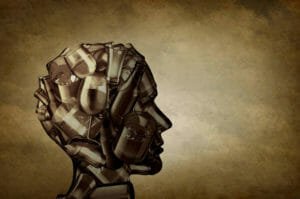You may have heard the term “psychoactive drug” before. But what actually differentiates psychoactive drugs from other drugs? Psychoactive drugs are substances that alter mental function when consumed. Psychoactive drugs affect how the brain works and cause changes in mood, awareness, thoughts, feelings, or behavior. Examples of psychoactive substances include alcohol, caffeine, nicotine, marijuana, and certain pain medicines. In fact, alcohol and caffeine are the most frequently used psychoactive drugs. Even though these drugs are legal and easily accessible, they can still be harmful both physically and psychologically if taken to excess. It is important to note that psychoactive compounds are also found in many prescribed medications. A common misconception is that drugs and medications classified as psychoactive are all addictive, but this is not the case. Not all psychoactive drugs are addictive, although many are.
Classifications of Psychoactive Drugs
Psychoactive drugs are classified in four ways including:
- Their common effects
- Their likelihood for addiction
- Their chemical composition
- The U.S. Drug Enforcement Administration Schedules I-V
A drug’s “common effects” include how the brain and the body react to the substance. For example, antidepressants, hypnotics, and other medications are all used to treat attention deficit hyperactivity disorder. Yet each of these drugs has a different likelihood to cause addiction, rated from high to low. Drugs can also be distinguished by their unique chemical composition and structure. The U.S. Drug Enforcement Administration also classifies drugs by their potential for abuse according to Schedules I-V. Schedule I drugs have the highest potential for abuse and Schedule V drugs have the lowest potential for abuse.
The Types of Psychoactive Drugs
The five groups of psychoactive drugs are stimulants, depressants, opioids, hallucinogens, and cannabis. Alcohol is considered a psychoactive drug since it is a depressant. Depressants cause reduced feelings of tension, relieve anxiety, and relax muscles. When depressants are used in excess, individuals may experience symptoms including clammy skin, slow and shallow respiration, and a fast and weak pulse. They may also experience coma or even death. Drugs in the depressants category include alcohol and tranquilizers such as benzodiazepines and barbiturates.
The Psychoactive Effects of Alcohol On The Brain
 What is the mechanism of psychoactive drugs? In regards to alcohol specifically, alcohol is absorbed throughout a person’s entire body, but it particularly affects the brain and how it functions. Alcohol disrupts the brain’s communication pathways and impacts how the brain processes information. First off, executive functioning, such as attention and memory, is associated with the frontal lobe. Researchers worked with clinical and experimental data on alcohol and found specific structural changes in the prefrontal area of the brain and the left cerebellum. The research suggests that these structural changes can help predict executive function ability in alcoholics. The anatomy of these areas after alcohol consumption may help connect executive dysfunctions and alcohol dependence. The ability to link this relationship between activity in the brain during executive performance and alcohol use was identified even when clinical signs of alcohol dependence were absent or mild, and the user’s demeanor appeared normal.
What is the mechanism of psychoactive drugs? In regards to alcohol specifically, alcohol is absorbed throughout a person’s entire body, but it particularly affects the brain and how it functions. Alcohol disrupts the brain’s communication pathways and impacts how the brain processes information. First off, executive functioning, such as attention and memory, is associated with the frontal lobe. Researchers worked with clinical and experimental data on alcohol and found specific structural changes in the prefrontal area of the brain and the left cerebellum. The research suggests that these structural changes can help predict executive function ability in alcoholics. The anatomy of these areas after alcohol consumption may help connect executive dysfunctions and alcohol dependence. The ability to link this relationship between activity in the brain during executive performance and alcohol use was identified even when clinical signs of alcohol dependence were absent or mild, and the user’s demeanor appeared normal.
The results of this study were published in the April 2014 issue of Alcoholism: Clinical & Experimental Research. The results of the study demonstrated that frontal lobe deficiency, characterized by executive impairment such as defects in attention and working memory, has been linked with an inability to abstain from alcohol. Interestingly enough, “high-functioning” alcoholics in the study with frontal executive dysfunction appeared to have a “normal” cognitive mental status. Findings from a new study, conducted by the same research team, used magnetic resonance imaging (MRI) to identify volumetric measurements of segmented brain structures. The structures suggested that executive function and general mental status are affected differently by long-term use of alcohol.
Other symptoms that result from brain alteration under the influence include euphoria, depression, excitement, confusion, and in excess consumption, blackouts. During the initial alcohol consumption, alcohol intensifies the release of the neurotransmitter dopamine, creating euphoric feelings of relaxation in the midst of impaired logical thinking.
- Once the blood alcohol content (BAC) surpasses 0.05, the user’s blood and body tissue start to absorb the excess alcohol and the euphoric feelings translate to depressive symptoms. This spike in depressive feelings is accompanied with disorientation and memory loss.
- One of the more obvious signs of alcohol consumption is excitement. Excitement usually occurs within a BAC of 0.09 to 0.25, which is legal intoxication. The parts of the brain responsible for impairment at this stage include the occipital lobe, temporal lobe, and frontal lobe. This trio of cerebral lobes is responsible for the symptoms of blurred vision, sloppy speech, spotty hearing, and lack of control. The anterior cerebral lobe, the parietal lobe, which processes sensory information, is also affected by alcohol, causing the loss of fine motor skills and slower reaction time.
- With a BAC of 0.18 to 0.3, the user’s cerebellum, which is responsible for coordination, is also impacted. As a result, a person this intoxicated will need help with basic functions like walking or standing. An extreme consequence of excessive alcohol use and a high BAC produces what is commonly referred to as a “blackout.” Blackouts are a temporary loss of consciousness and memory formation. Blackouts are a result of the hippocampus, the region of the brain that is responsible for making new memories, malfunctioning.
How Long Does Alcohol Stay in Your System
Overall, once consumed, alcohol affects the human body quickly. Alcohol is absorbed through the lining of the human stomach and into the bloodstream. The alcohol then diffuses into tissues throughout the body. In just five minutes, alcohol reaches the brain and within ten minutes leads to immediate effects. Within twenty minutes, the liver processes the alcohol, at an average rate of one ounce of alcohol per hour. Specifically, a BAC of 0.08, the legal limit for driving, takes a minimum of five and a half hours to leave the user’s system. Additionally, alcohol remains in the urine for up to eighty hours and in the user’s hair follicles for up to three months.
Although at this point the psychoactive effects of alcohol are no longer obvious, research has shown that there are long-term consequences of alcohol on the brain and how it functions.
If you or somebody you love is struggling with alcohol abuse, contact Boardwalk Recovery today for more information on how we can help heal the damage caused by addiction and develop a treatment plan that will improve health and quality of life.
Life can be good again and we’d like to show you how.






